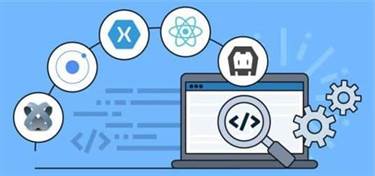Such targets are believed to negatively change team behavior because teams select the lowest numbers to get below the threshold and not actual risk, requiring mitigation. Failure analysis seeks to determine the details of the failure of the containment and generally involves the collection of the fragments generated by the explosion within it. An account is given by Craven, who describes the piecing together of the fragments to reconstruct the original containment and to take measurements of the thickness.

In addition, the FMECA procedures are straightforward and allow orderly evaluation of the design. The analysis should always be started by listing the functions that the design needs to fulfill. Functions are the starting point of a well done FMEA, and using functions as baseline provides the best yield of an FMEA. After all, a design is only one possible solution to perform functions that need to be fulfilled. This way an FMEA can be done on concept designs as well as detail designs, on hardware as well as software, and no matter how complex the design. The computer is considered to be idle by Windows if there has not been user interaction via the mouse or keyboard for a given time and if the hard drives and processors have been idle more than 90% of that time.
How are Failure Modes identified in FMEAs?
FMEA is in part a journey from what an item is intended to do all the way to the root cause of why it does not accomplish its intention. Some practitioners identify “failure” as the antithesis of the function. The container is supposed to contain fluid up to 5000 psi, and it does not contain fluid. An example is “leak.” If the container leaks, that describes the manner in which the container does not contain the fluid.
Probability of failure typically ranges from improbable to frequent with a total of four to five levels. Therefore, a burglar alarm has multiple failure modes or competing risks. To put it simply, a functional failure is when the equipment is not doing what you want it to do. (or it’s doing something that it’s NOT supposed to be doing) This distinction is important because equipment often have multiple functions. This is key in creating an effective and efficient Preventive Maintenance Program. It is a good practice to identify risks for each process step as early as possible.
What is Process Failure Mode and Effects Analysis (PFMEA)
An FMEDA done without considering these mechanical components was incomplete, misleading, and potentially dangerous. The fundamental problem in using the FMEDA technique was the lack of a mechanical component database that included part failure rates and failure mode distributions. High performance internal combustion engines are complex machines with multiple potential failure modes and some catastrophic effects of failure.
However, RPN can be used to include other considerations to the risk analysis such as the inclusion of detectability of failure value to the analysis. A few hours of time to create the study can identify problems that can lead to product failures that harm people and property. The business cost of failed products can be very high, including lost customers, warranty returns, fines, product recalls, and lawsuits. It was one of the first highly structured systematic techniques for failure analysis. They developed FMEA to study problems that military systems might have.
The PFMEA also tracks improvements through Risk Priority Number (RPN) reductions. By comparing the before and after RPN, a history of improvement and risk mitigation can be chronicled. This limits their applicability to provide a meaningful input to critical procedures such as virtual qualification, root cause analysis, accelerated test programs, and to remaining life assessment.
You can define all your potential failure modes and the effects of these failures.
Documents pertaining to implementation are work instructions, quality control procedures, component requirement specifications, engineering change documents, operating manuals, and others. Effectiveness documents may include inspection documents, drawings, postproduction monitoring, vendor evaluation forms, component compliance certificates, and others. The FME(C)A is a design tool used to systematically analyze postulated component failures and identify the resultant effects on system operations. FMEAs can be performed at the system, subsystem, assembly, subassembly or part level. The FMECA should be a living document during development of a hardware design. It should be scheduled and completed concurrently with the design.
For example, the potential failure modes of a solder joint are either open or intermittent change in resistance, which can hamper the solder joint function as an electrical interconnect. In cases where information on possible failure modes that may occur is not available, potential failure modes may be identified using numerical stress analysis, accelerated tests to failure, failure mode definition past experience, and engineering judgment. A potential failure mode may be the cause of a potential failure mode in a higher-level subsystem, or system, or be the effect of one in a lower-level component. A potential failure mode may be the cause of a potential failure mode in a higher level subsystem, or system, or be the effect of one in a lower level component.
This may include selecting components with higher reliability, reducing

the stress level at which a critical item operates, or adding redundancy or monitoring to the system. Next, the systems and subsystems are depicted in functional block diagrams. Reliability
- Acceptability is determined by the assignment of the RPN according to each defined category (Table 5.5).
- He has 35 years of experience in reliability testing, engineering, and management positions, including senior consultant with ReliaSoft Corporation, and senior manager for the Advanced Reliability Group at General Motors.
- Each function or piece-part is then listed in matrix form with one row for each failure
mode. - For example, a top event such as “system no response” in an electrical device may be due to numerous causes.
- To verify that risk control measures have been implemented and are effective, an implementation column and effectiveness column may be added to include document references.
block diagrams or fault trees are usually constructed at the same time.
 English
English


